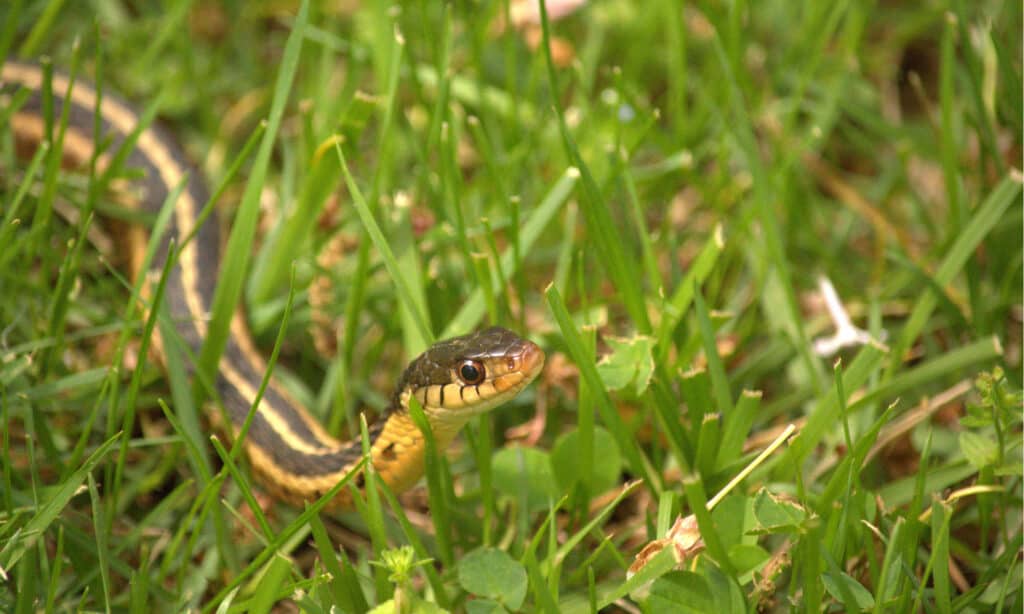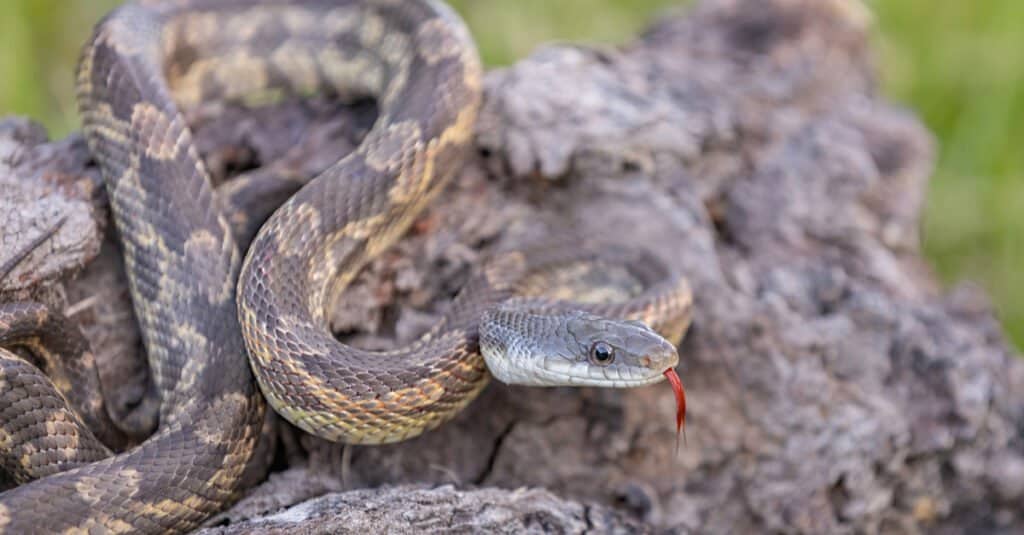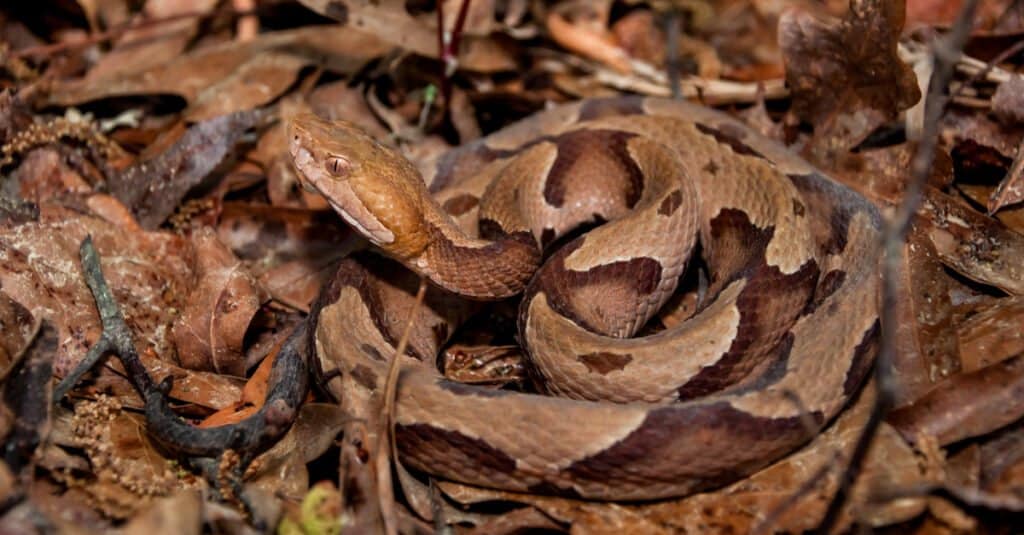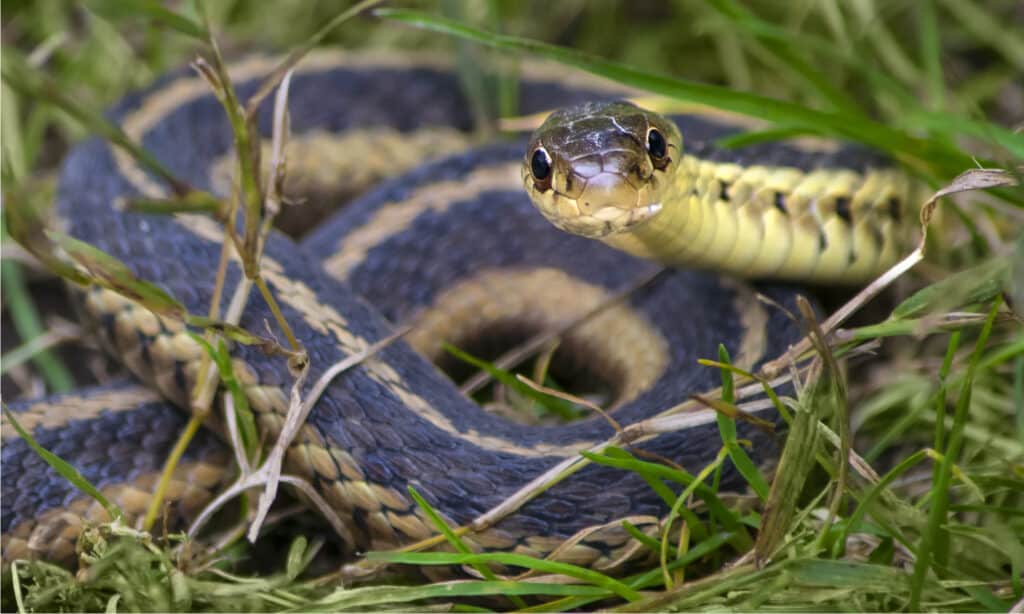Snakes are cold-blooded animals that usually hide away when it gets cold. For many, the coming warm months mean lots of fun but also lots of fear! Snakes are truly amazing animals who have adapted to emerge from their hibernation when it gets warm. Today, we will answer the question, “when do snakes come out in Virginia?” By the end, you’ll know when snakes emerge from hibernation in Virginia, plus a bit about their hibernation habits. Let’s get started!
When do snakes come out in Virginia?

Snakes are most active from March to October, when the weather is warmest.
©Charlotte Payne/Shutterstock.com
Most snakes come out of hibernation (called “brumation” in reptiles) in March. Snakes don’t follow a monthly calendar. Instead, they follow the seasonal temperatures and become more active as the temperatures warm up.
Hibernation is a tactic that many animals use to conserve energy and wait out the tough times that come with cold weather. Snakes don’t actually hibernate but engage in an activity called brumation. Brumation is similar to hibernation, but it specially refers to reptiles. Animals like ground squirrels and bears (mammals) hibernate, while reptiles brumate. All sorts of reptiles brumate besides snakes, including alligators, turtles, and more.
The most active period for snakes in Virginia is from April to October, with the majority of snakes becoming active well into spring. The best way to tell if snakes will be active is based on temperature, however, not time. Snakes prefer weather between 70 and 90 degrees, and any warm day after March could trigger snakes to be more active.
When do snakes hibernate in Virginia?

Most snakes head into their state of brumation around October.
©Silent Shoot/Shutterstock.com
Snakes are cold-blooded and need to conserve energy when it gets cold out. The time that snakes begin their brumation is dependent on location and weather, but most snakes in Virginia begin their brumation in October. Once they are hidden away, they will “sleep” until March or April, depending on the weather.
This rule of thumb is generally true for most of North America, although in warmer states, the snakes either brumate later and for less time or not at all.
Why do snakes hibernate?

Snakes brumate to conserve energy since they can’t warm themselves in the sun in the winter.
©Jay Ondreicka/Shutterstock.com
Reptiles are known to brumate when the weather gets cold. Brumation is similar to hibernation, only it is a process specific to reptiles. The main reason snakes brumate for certain periods of the year is to conserve energy during difficult seasons where food and warmth are scarce.
Snakes are cold-blooded animals, meaning they regulate their internal temperature through chemical reactions and the world around them. When a snake is basking on a sunny sidewalk or trailside, it is using the sun to trigger its internal chemistry to help regulate its temperature. This process works best when the temperature is between 70 and 90 degrees. Humans, on the other hand, are warm-blooded animals. We can regulate our temperature internally, without any help from the sun. The main advantage for cold-blooded animals, however, is that it is much less resource-intensive.
When the weather outside isn’t conducive to cold-blooded animals (outside the range of 70 degrees), the best option is to enter a sleep-like state. That is where brumation comes in! Snakes slow their body processes, slow their movement, and wait until the warmer months. When they can regulate daily, they come back out!
Do all snakes hibernate during the winter?
In Virginia, all snakes spend a portion of the year in a state of brumation due to the weather. This is primarily because the entirety of Virginia averages lower than the minimum temps needed for most snakes during the winter.
In states where the average temperature generally stays above 70 degrees, snakes either have a shortened brumation or don’t have it at all! In Arizona or southern California, for example, many snakes don’t need to brumate because the weather never drops to a temperature that they can’t tolerate.
How do snakes hibernate?

Most snakes brumate in holes underground, sometimes in large groups to stay warm!
©K Quinn Ferris/Shutterstock.com
When it’s time for snakes to brumate, one of the first things they do is seek out a place to hide. Usually, the location is under a rock, in a hole, or somewhere underground. Generally, the deeper, the better. This hiding hole is called a hibernaculum, and a snake can use the same spot multiple times. Additionally, certain species of snake will congregate in the same hibernaculum to better conserve their energy. Some hibernaculum can have dozens of snakes inside brumating!
Once they are hidden away, their breathing, metabolism, and bodily functions slow, and they enter a sleep-like state. However, unlike other hibernators, snakes can come out of brumation to warm up a bit or re-hydrate. On certain warm winter days, snakes are known to sun themselves to top up their energy stores before heading back down for a long sleep.
The photo featured at the top of this post is © iStock.com/Tee-roy
Discover the "Monster" Snake 5X Bigger than an Anaconda
Every day A-Z Animals sends out some of the most incredible facts in the world from our free newsletter. Want to discover the 10 most beautiful snakes in the world, a "snake island" where you're never more than 3 feet from danger, or a "monster" snake 5X larger than an anaconda? Then sign up right now and you'll start receiving our daily newsletter absolutely free.
Thank you for reading! Have some feedback for us? Contact the AZ Animals editorial team.







